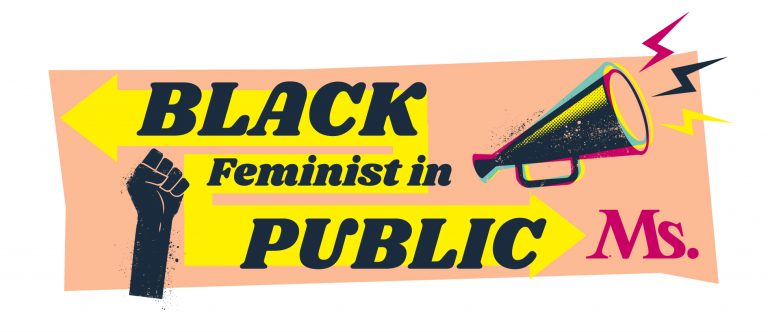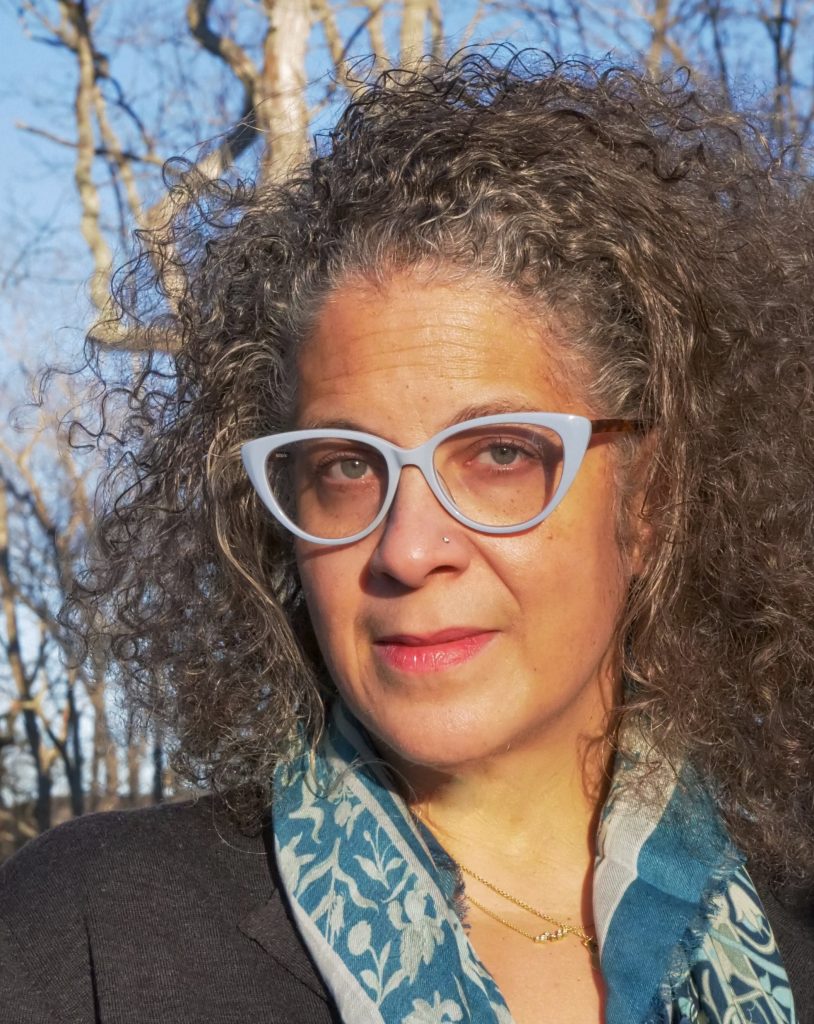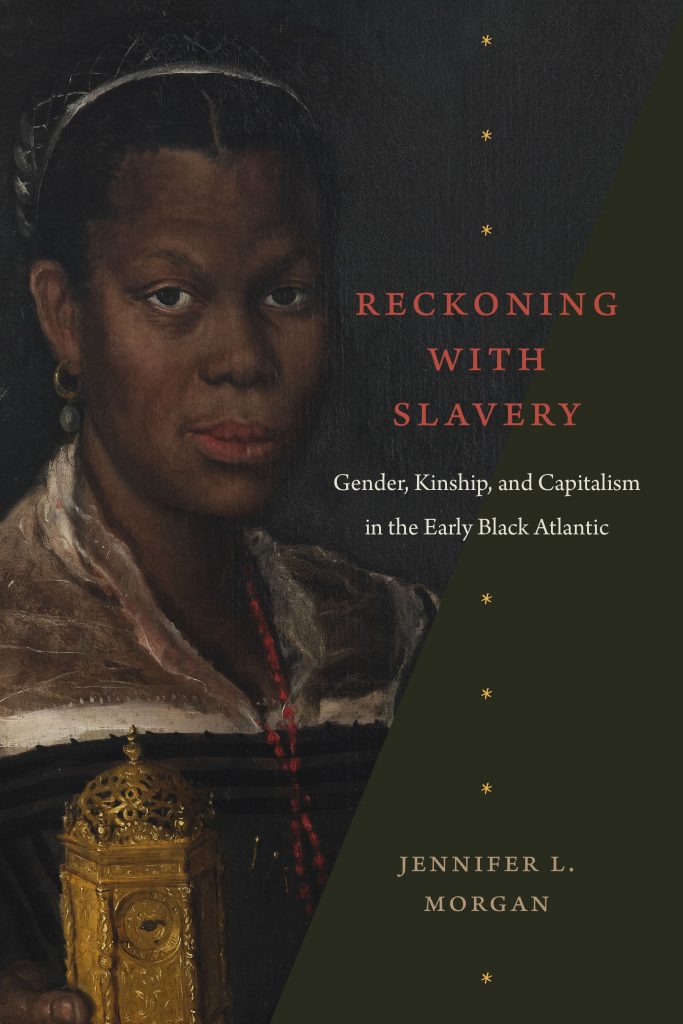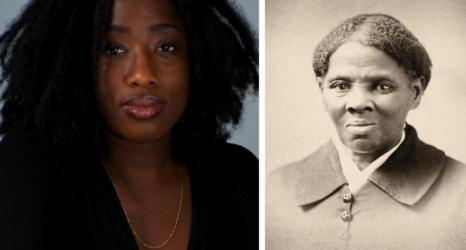
Black Feminist in Public is a series of conversations between creative Black women and Janell Hobson, a Ms. scholar whose work focuses on the intersections of history, popular culture and representations of women of African descent.
Juneteenth honors the emancipation in 1865 of those who were enslaved in this country. At a time when discussions about the legacy of slavery—from the 1619 Project to “slavery movies”—have become politically and culturally fraught, there is an increasing number of scholars doing research about the slave past and doing so from Black feminist perspectives.
The Black Feminist in Public series will highlight three scholars of slavery studies and Black women’s histories who agreed to an interview with Ms.’s Janell Hobson.

Next up is Jennifer L. Morgan, professor and chair of history at New York University. She is the author of Laboring Women: Gender and Reproduction in the Making of Slavery in the New World (University of Pennsylvania Press, 2004) and the recently published Reckoning with Slavery: Gender, Kinship, and Capitalism in the Early Black Atlantic (Duke University Press, 2021).
Hobson: In your book Reckoning with Slavery, I love these different stories about women in slavery that you found in the archives. Is there a particular story that stands out for you?
Morgan: Most of the women who I talk about in this book are not named; their actions are described. And there’s a woman onboard a slave ship at the end of the seventeenth century, who “accidentally” blows it up by dropping her lit pipe into the hole where the gunpowder is. The ship is still anchored off the coast of Ghana. Some people survive the blast, which is why there’s testimony about it. I think about her having a tobacco pipe, smoking above board and someone seeing her. There’s definitely a sailor who sees her do it. And he sees her drop her pipe into the hole. I believe that she knew there was gunpowder down there and that she was willing to kill herself and everyone on board that ship to stop it from taking them across the Atlantic.

Hobson: Yes, a story of resistance! It’s important that we’re finding out more about how women were involved in many of the slave ship rebellions. That’s another history that I don’t think we know enough about.
Morgan: Exactly, yeah.
Hobson: What do you think is the biggest misconception that present-day audiences have about the history of slavery?
Morgan: I think that for the most part, when people think of slavery, they think of a Southern cotton plantation. They might think about a tobacco plantation. And both of those are obviously incredibly important ways in which the work that enslaved people did was agricultural. It was often in these large-scale agricultural settings. But in my own work, by looking at the earlier period, I’m looking at enslaved people who are doing all manner of work. Because if you’re looking at the colonial period, first of all, land has to be cleared and houses have to be built and animals need to be raised and boats need to be sailed and things need to be carried and shoes need to be made.
I could go on and on, and I think that people, certainly Americans, often fail to understand that enslaved people were everywhere. From New England to Florida, across the country. And it wasn’t that all of those places were slave economies, but unfree labor is the American story. I also think when people hear that I do work mostly on enslaved women, they think of women as only working as domestics. African women and women of African descent were doing the brutal work of the field in the South. They were doing hard labor everywhere, because skilled labor, anything that was associated with skill, was usually, from the slave owner’s perspective, the work of men. Enslaved women were doing the grunt work.
“People, certainly Americans, often fail to understand that enslaved people were everywhere. From New England to Florida, across the country.”
Hobson: Is this where we get the ideology of African women being suited for work as “beasts of burdens,” something you address in your first book?
Morgan: What I’ve argued is that there are two pieces to it.
One is that those early modern travelers to West Africa construct a fantasy image of African women as sexually promiscuous and available. Almost every European traveler talks about being brought a woman or a girl to have sex with while they’re doing business, and on the coast, that is par for the course. There’s a presumption that the crew on slave ships will have sexual access to captive women. And we also know that in the slave forts, like with Ghana’s Elmina or Cape Coast Castle, there is a stairway that leads from the women’s dungeon to the governor’s quarters, because the governor would send somebody down to bring up a captive woman to rape and then send her back down to the dungeon. So, there’s a presumption about sex. And for me, that is a presumption that is part of what creates the idea of race. There’s all of these ways in which Europeans are situating Black people as “Black,” as racially different. And I think that it’s too easy for us to think that race happens here, and gender or sex happens there. These images and these descriptions of African women as sexually available are part of what the European writers and readers are using to justify the distinction between Europeans and Africans.
The other piece is this idea about African women giving birth without pain and that they don’t care about their babies. And they throw their breasts over their shoulders in order to nurse them. All of that, I think, is about producing an image of Black women as being workers, a certain kind of worker, a certain kind of person who doesn’t have to be treated delicately because they’re going to have a baby.
Hobson: How does that shape the gender politics of the slave trade itself?
Morgan: If you’re looking at this early period, we certainly know right now that the first enslaved people to arrive to Virginia came in 1619. We also know that there are enslaved sailors onboard Columbus’s ship in 1492. So, if we think that slavery starts with North America, we’re missing 150 years of slavery in Latin America and the Caribbean. And during those early years, if you look at the slave trade before 1700, while men are in the majority, women are sometimes in the majority as well. So, there are many more women who are captured in those early years.
That also raises questions about, what does it mean in those first generations of enslaved people who saw the ways in which their lives and their labor were being taken from them by slave owners, but who were also in mixed, gendered and aged communities? There are men. There are women. There are children. And that’s also part of what enslavement is, this assumption that the families that you may or may not be able to make are also always going to be enslaved.
Hobson: When I was reading your book, it actually made me think that 1619 really represents more the legacy of race and the legacy of intersectionality—when focused on Black women’s experiences—more than slavery. This is the beginning of race intersecting with gender to create the conditions that would give us a hereditary race slavery. Could you say more about what a date like 1619 represents for you?
Morgan: I am sometimes a little hesitant, or I push back against commemorating specific dates, because there are actually people who arrived enslaved to Virginia before 1619, just before. Maybe 1618, maybe 1617. There are questions about that. But to me, if you really want to know the first moment that an enslaved African is sold into North America, then maybe 1619 isn’t the right date. But what is right about 1619 is that in 1619, a group of enslaved people were sold for money to two purchasers in the Colony of Virginia. Now, those men who bought those captive Africans had been interested in slave labor for a very long time.
In fact, the English have been trying to get a foothold in the Americas using slave labor for decades at this point. They see what the Spanish are doing. They see what the Portuguese are doing. They see what the Dutch are doing. They know there’s money to be made. So, slavery is not an accident. Slavery is the engine of colonial settlement. And if we don’t understand that, then we don’t understand anything about the history, not just of North America, but of the Caribbean, of Latin America, of Canada. We also need to understand this involves indigenous people, as well as Africans. And we need to understand that part of what is produced, in the context of the Atlantic World, is a new way of thinking about human beings as enslaveable. There are some people who are enslaveable, and there are some people who are not.
“Slavery is not an accident. Slavery is the engine of colonial settlement. And if we don’t understand that, then we don’t understand anything about the history, not just of North America, but of the Caribbean, of Latin America, of Canada.”
Hobson: Yes, the very distinction of a kind of chattel slavery that did not exist in Africa or Europe.
Morgan: That’s what is being produced at this moment. If we look at the world through the eyes of an enslaved African woman who disembarks in Hispaniola in 1503, we see something quite different. She sees what the violence has done to her sense of her future, she sees the way that work, that hard work is now her daily existence. She sees the way that her body may or may not produce a child, something that she would have, perhaps, just presumed would happen in her earlier life.
Now, maybe it happens, maybe it doesn’t. There’s sickness. There’s work. There’s hunger. There’s infant mortality. And then there’s the way that her child is always situated as enslaveable, as enslaved. All those conditions shape 1619, and it’s very important that Americans understand the way that this country’s history is fully embedded in slavery and the slave trade. In that regard, I am a huge fan of the 1619 Project. I think that it’s raising enormously important questions. And unfortunately, now it has become a political point for conservatives who are trying to do the very thing that they’re accusing the 1619 Project of doing. They’re trying to revise the past. They’re trying to erase evidence.
Hobson: What is interesting about these debates is the slavery of 1619 is not even the same slavery that Confederates were fighting to preserve during the Civil War.
Morgan: I think that gets back to your earlier question: what do people think of when they think of slavery? They think of Confederate planters. It’s important to know about the Confederate planters, but there was also slavery in New York City. There’s a majority of enslaved female laborers in Colonial New York. Wall Street is a boundary between where the “Negro” village was on the other side of the wall, where Black men and women who were working for the Dutch West India Company lived in the 1640s. We need to know these things.
Hobson: How much of that has to do with the Confederate side of history being preserved through plantation sites and monuments and Civil War reenactments, while the earlier history has been erased or overlooked?
Morgan: That is part of the reason why it’s so hard for us to call to mind this early history. We don’t have much material culture. We don’t have structures that still stand. I have a colleague who runs a walking tour of Lower Manhattan called Black Gothamist. And what’s really striking about the tour is that it’s a tour of “no” places: no names, no plaques. But we have evidence in the archives. We know how many enslaved people were purchased in New York in 1640. We know how many enslaved people lived in Virginia before the 1650s. We have tax records. We have bills of sale. We have inventories. We have correspondence between Colonial governors and the Board of Plantations. The archive does tell us some things, and we can figure out better ways to commemorate that history. We can figure out ways to memorialize and monumentalize. We can. It just takes some work.
Up next:





